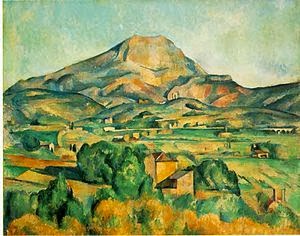As with any art form, landscape painting does not exist within a vacuum and as such it's possible to trace major shifts in thinking through various times by looking at different works produced during different eras. The three artists Durer, Lorrain and Lowry are good examples of this as their work clearly show some of these changes.
Landscapes were considered a lowly form of subject matter in earlier eras. Religious motifs were desirable and landscape served merely as a backdrop to these important moral scenes. However this was about to change as the Renaissance began to view landscape as a subject in its own right.
In the Netherlands landscape was one of the first places that landscape became respectable compared to Italy and France but it took some while for it to become truly accepted. Durer (1471-1528)was born in Germany and travelled to Venice more than once and his studies here included Maths and literature. On his return home his work shows the influence of these Renaissance principles incorporating perspective and ideal proportions.
In this painting by Durer, 'Adoration of the Magi' we can see the perspective used in the somewhat unimportant, in terms of subject matter, background as well as the significance of the religious subject matter. And it's true that religion as well as patronage still had a large part to play in subject matter of art. However the influence of the Renaissance gradually took hold. By 16th century in the Netherlands and Germany art was influenced by the Renaissance but followed a more naturalistic bent together with precise observation as can be seen in these precise and beautifully observed drawings by Durer.
This precision can be seen not only in Durer's work but in the later work of Bruegel. However, Durer's many lovely watercolour sketches, made as he crossed the Alps are considered to be amongst the first landscape for landscape's sake in the world of Art.
Durer
Durer
Claude (1600-1682) specialised in idealised landscapes presenting idyllic views of nature- the classical landscape. These landscapes featured ruins and pastoral figures and these objects had to be placed carefully to present a balanced and harmonious whole. This was perfected by Claude and his contemporary Poussin and they often sketched together. Study of nature and exploration of light became a focus and Claude especially concentrated on this.
This is a typical Claude landscape showing all the classical features. His paintings seemingly follow a formula of a dark foreground, a paler middle distance and a glorious sky of subtle light.
By moving on to the 20th century we see that Lowry's work shows the increasing use of the industrial landscape as an acceptable subject matter. He may have been influenced by the French painters of the 19th century who made art from the realities of the emerging modern city; and Lowry had a French teacher, Vallette. But there are also links with van Gogh who painted simple people going about their work.
Lowry favoured a strong white in his paintings which usually do not show any shadows. This can make the works seem naïve in their execution and the extent of Lowry's artistic achievements still create arguments.
In the 20th century new ways of depicting landscape became acceptable though shocking to some and this is especially true as artists painted scenes from WW1. Battle scenes were not new in Art but in earlier decades such works often glorified war; an accusation that cannot be levelled at works such as this by Paul Nash.
A landscape so different from those of Claude's landscapes in atmosphere and technique; so unlike a landscape, so horrible that it's hardly recognisable. In many ways it's impossible to write a short account such as this with any accuracy - so many influences have affected artists and the genre is so vast. However the history of this genre is fascinating and would repay further study.








































